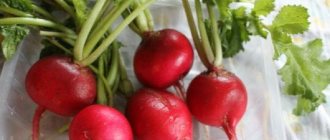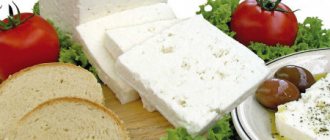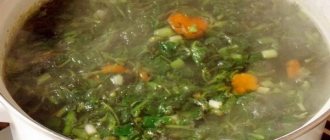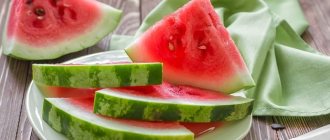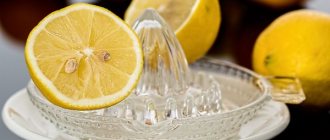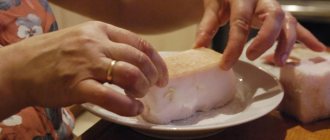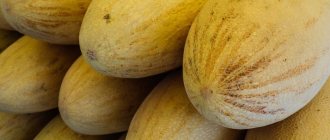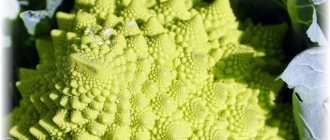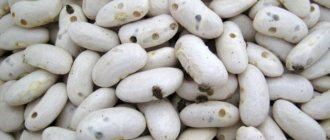Harvesting is the most long-awaited job of almost any gardener or summer resident. Everyone wants to receive a reward for their efforts and daily worries over several months. Because of this, late summer and autumn have always been a favorite time for those who work in the garden.
But it happens that the summer months are not particularly warm, rainy, and many crops that were grown in the beds did not have time to ripen. Either the new variety did not take root in the current natural conditions, its growth and development were much slower than would have happened under suitable conditions. Or, another common reason for almost all beginning summer residents is improper care, a couple of unacceptable actions, nuances that were not observed. All this can cause unripe fruits.
In autumn, problems often arise with vegetables such as pumpkin. Although she does not seem particularly whimsical, still not everyone can find an approach to her the first time. Therefore, in this article we have collected the top tips and methods that will help correct the situation and bring the pumpkin to the state of a ripe fruit.
Signs of a ripe pumpkin
For some owners who are just starting to garden, many questions arise about the plants and crops they grow. It is not always clear from the appearance of a pumpkin when it can be picked and stored in a cellar. Therefore, one of the most popular questions is - by what signs can one judge that a pumpkin is already ripe ? Let's see what features a ripe pumpkin has:
- The pumpkin can already be picked if pressing on the rind does not leave any dents. When this vegetable is not yet ripe, the pulp inside has a more delicate and flimsy structure, and the skin is thin and fragile. As it ripens, the flesh acquires a harder structure, and the skin can only be damaged by a sharp object. There are exceptions for some varieties that, even when ripe, have thin skin, but this is very rare, and such information is indicated on the seed package. The color of pumpkins can vary in different shades, light yellow, yellow, orange, green, dark green;
- Many varieties change color when ripe, and a special pattern appears on the peel. If distinct stripes, a mesh or other pattern characteristic of a given type of vegetable appears on the pumpkin, then there is a high probability that the pumpkin is ready to eat;
- During growth, pumpkin stems are thick and juicy, but when the vegetable becomes more and more filled with juices, the stems, on the contrary, dry out and begin to lighten. When the pumpkin is fully ripe, the stems and stalk become completely dry and hard - this is a 100% sign that it is time to harvest. It is very important to remove the pumpkin from the stem correctly. You cannot tear it off without the stalk, as in this case the vegetable will not be able to be stored for a long time. It is very convenient to cut pumpkins with pruning shears;
- not a particularly reliable method, but quite suitable as an additional confirmation of ripeness. You can check the ripeness of a pumpkin in the same way as the ripeness of a watermelon, by tapping it with your finger or patting it with your palm. A dull ringing echo is proof of ripeness;
- You can check the ripeness of the pumpkin even when it is already cut. To do this, you need to press on the pulp with your finger. If no juice comes out of it, then the vegetable was ripe. And if droplets of moisture appear, it means the pumpkin was not fully ripened.
These signs will help every pumpkin lover understand when this type of vegetable can and should be harvested.
Consider variety specifics
Man has been cultivating this large vegetable with a strong peel and a large amount of juicy pulp for many centuries on almost all continents - about 20 types of pumpkin alone are known. Therefore, it is not surprising that the number of its varieties goes into the hundreds. And all this diversity, as usual in agriculture, is divided into several groups according to the time of ripening:
- early ripening;
- mid-season;
- late ripening.
The first varietal group ripens in approximately 90-105 days, that is, the early ripening harvest can be harvested at the end of August. The fruits of such plants are relatively small, with a thin skin. They can be stored for up to 4 months, but in most cases it is better to sell them within a month from the moment they are removed from the melon plant.
Mid-ripening varieties ripen on average in 4-4.5 months, which occurs approximately in the third or fourth week of autumn. During this time, the plants manage to form large pumpkins, which can be stored for up to 6 or even 9 months.
Late-ripening varieties require up to 5 months to fully ripen - in other words, they finally ripen only by the middle or even the end of October. The harvest obtained from such plants is distinguished by the densest peel and low moisture content of the pulp, due to which it is stored for a particularly long time - some varieties can be stored quietly for up to 1 year or even more.
Thus, if you are growing pumpkin from seeds with a unique varietal identity, and not from a random seed mixture, then when determining in which month to start harvesting, take into account the individual general characteristics of the variety. However, you should not rely on them entirely - they will only be correct under ideal conditions, which in practice almost never occur. In real life, the rate of ripening of pumpkin plantations will be influenced by numerous factors. This includes the amount of sun and moisture, the agricultural technology you use, and the characteristics of the soil on the farm. Therefore, when determining the appropriate time to harvest pumpkin, you need to take into account numerous external signs.
Suitable conditions for ripening. What to do if the conditions are “wrong”?
The best temperature for pumpkin is 20-25 degrees. Some varieties like warmer weather and grow well at 30 degrees, but for most species this is too high.
However, this problem is much more common when, on the contrary, the summer is too cold than usual. Or you simply live in the northern regions. Under such conditions, the pumpkin is unlikely to ripen by the end of the warm season, and unripe vegetables will not be able to lie in the cellar for a long time. If the summer in your regions is not so warm, then it is recommended to grow pumpkin seedlings and then transplant them into open ground.
When growing seedlings, it is worth considering that this vegetable does not tolerate transplants very well, especially at such a young age. Because of this, it is necessary to properly plant and care for small pumpkin sprouts. It is best to distribute the seeds into separate peat pots, in which the pumpkin can later be planted in open ground. First, the containers are filled halfway with the nutrient mixture. And when the plant gets bigger, soil is added. This planting pattern allows for the formation of a large and strong root system.
Before planting seedlings in the beds, you need to dig deep holes into which compost or humus is added to the bottom. A pot of pumpkin is placed on top and everything is sprinkled with earth. This method of replanting will avoid problems with the pumpkin, and the fertilizer will provide not only nutrients, but also additional heat.
You can also treat the seeds with special growth solutions. They give a fairly strong effect for the germination and further development of vegetables.
How to tell if fruits are ripe by their appearance
Most accurately, the degree of readiness of pumpkins for harvesting is reflected by their peel and stalk:
- A ripe vegetable is completely painted in the color characteristic of a particular variety - it can vary from dark green to rich orange. Moreover, the color should be uniform. In addition, in fully ripened late-ripening varieties, the peel becomes so hard that it cannot be pressed through with fingers or scratched with a fingernail.
- The fruit stem of a fully ripened pumpkin dries out, becomes woody and acquires a yellowish or grayish tint. If it is still green and soft, then it is better to wait some more time.
You can also judge ripeness by the condition of the leaves. By the time of collection, they usually become withered and withered. However, this may also be evidence of some problems with the plant, so the condition of the foliage should be considered a secondary factor.
To assess the ripeness of your pumpkin crop, you can remove one of the fruits and cut it open. If the pulp has already acquired a rich color and exudes a signature pumpkin smell, then you can begin the harvesting campaign. Another sign of finally ripe pumpkins is heavy and dense seeds.
Suitable feeding for pumpkin to make it ripen faster
If the pumpkin does not ripen for a long time, then you can try making special fertilizers that help the fruits grow faster and better.
Every week you can add ash to the beds; its composition has a very good effect on the development of young pumpkins. It is very important not to overdo it with this fertilizer, since if it is in excess, it can have the opposite effect, and then the crop may stop ripening altogether. Therefore, when adding this fertilizer, you should constantly monitor the condition of the plant, the richness and juiciness of the stems, and the hardness of the peel. At the slightest deviation from the correct path of maturation, you need to take a break. And then you can resume feeding again.
A one-time feeding with a specially made infusion of superphosphate gives a very good effect. To prepare it, you need to take superphosphate granules and dilute them with water according to the instructions. Infusion for a quarter of an hour or half an hour ensures complete dissolution of solid particles, and the plants can immediately absorb this fertilizer. You need to fertilize the pumpkin with superphosphate before September. Then the vegetable will have time to absorb all the microelements and ripen before the onset of cold weather. Also, it is worth considering that the weather in autumn can be unstable. This means that the plants will already be preparing for winter, and the applied fertilizers are unlikely to bring much benefit.
Average dates for pumpkin harvesting in the regions
To a large extent, the speed of development of this crop in general and the ripening of fruits in particular depends on the specific climatic conditions of the region where you operate. The following patterns can be identified here:
- For the Moscow region and surrounding areas, harvesting time usually falls in September: early-ripening varieties are harvested in the first 2 weeks, and mid-ripening varieties are harvested towards the end of the month. Late ripening options in such climatic conditions are either not used at all, or are grown from seedlings - in the latter case, the harvest time falls on the same last weeks of September.
- In the harsher climate of the Urals and Siberia, the harvesting campaign on pumpkin plantations is carried out mainly in late August and early September - frosts are already possible from the middle of the month. For the same reason, mainly early and mid-ripening varieties are grown here.
- In the middle zone, pumpkins ripen mainly throughout September - milder climatic conditions allow the fruits to be kept on the melon patch longer, allowing relatively late varieties to fully ripen. If the weather is dry and warm, then you can leave the pumpkins until the first or second week of October - in this case they will only become tastier and more aromatic.
- In the southern regions, the climate allows even the most late-ripening varieties to be fully maintained on plantations. Here, as a rule, pumpkin picking begins only in October.
Also be sure to take into account the climate in a particular season. If the weather was mostly sunny and warm, then the pumpkins will ripen faster than in a cold and rainy summer. If the rains begin to fall closer to the time of harvesting ripe pumpkins, then it is better to start harvesting earlier - otherwise, due to high humidity, the harvest may begin to deteriorate, which will lead to financial losses.
Common mistakes
Novice gardeners often make mistakes that have a detrimental effect on harvesting results:
- Pumpkins are left on the ground too long. In such cases, they may become damaged and are no longer used for storage throughout the winter. They must be processed immediately;
- the fruits are picked with the stalks, such actions lead to the fact that the pumpkin begins to rot and disappears;
- storage of damaged fruits among whole ones. Damaged vegetables begin to rot in a short time and damage the rest. Damaged specimens must be trimmed and stored separately in the refrigerator.
It is necessary to harvest the crop in the middle of the day so that the dew has time to dry. This will prevent condensation.
Is it possible to get poisoned by unripe pumpkin? Is it possible and how to make an unripe pumpkin ripen?
"Hello! Help “save” the pumpkin. Frightened by weather forecasters about upcoming frosts on the ground, she harvested the crop ahead of time. Now I don’t know what to do with him. Will unripe pumpkin ripen at home? What can be prepared from it? (Yana)"
First of all, you need to make sure that the pumpkin is really not ripe. Green or dark gray skin is not a sign of immaturity. Thus, the varieties Acorn, Vesnushka, Zimnyaya Sladkaya, Lechebnaya, Khersonskaya, Altair, Bylinka, and Vitaminnaya have peels of various shades of gray or green, but inside they are fully ripe. Cut such a pumpkin and you will see that inside it has juicy flesh of a rich yellow-orange color.
How can you tell if your pumpkin is fully ripe? Do not cut the peel under any circumstances, as you risk spoiling the fruit. Take a close look at the stem and skin. An unripe pumpkin will have a greenish stalk, while a ripe one will be slightly dried out and corky. The peel becomes denser, more prominent and, in places, roughened.
If you are still sure that you have harvested an unripe pumpkin, carefully inspect each fruit for damage. The peel should not have dents, damage, cuts, or signs of rotting. Unfortunately, such fruits will not ripen; it is better to immediately put them into processing. We'll talk about this a little later.
If the correct storage conditions are met, some varieties of pumpkin can last until the beginning of spring. Let us share with you the secrets of how to properly store unripe pumpkin:
- the optimal air temperature in the room should be between 12–18 degrees above zero;
- in order not to provoke rotting of the fruits, monitor the humidity level (too high humidity has a negative effect on pumpkin);
- Avoid too much light, otherwise seeds may begin to sprout inside the pumpkins.
These are all the rules, following which, you can easily preserve the harvest until winter or even early spring. Our grandmothers also kept unripe pumpkin fruits under their beds. Lay newspaper or paper on the floor, arrange the fruits so that they do not touch each other. Remember to periodically check for signs of rotting.
If you notice the first signs of rotting or wilting on the fruits, put such pumpkins into processing. Unripe pumpkin can be used in salads or baked with apples in the oven. Also, unripe pumpkin fruits are processed into jam, adding orange, sugar and cinnamon.
How can you tell if your pumpkin is fully ripe? Do not cut the peel under any circumstances, as you risk spoiling the fruit. Take a close look at the stem and skin. An unripe pumpkin will have a greenish stalk, while a ripe one will be slightly dried out and corky. The peel becomes denser, more prominent and, in places, roughened.
Are pumpkins afraid of frost?
Since the time when you can start harvesting a ripe pumpkin harvest is in most cases in the fall, you need to take into account the possibility of frost. To prevent spoilage of fruits and not to add unexpected and very voluminous tasks to yourself, consider the following recommendations:
- Frosts, of course, will not be beneficial for your pumpkin plantation, but here you need to evaluate how much colder weather is expected and whether it is possible to protect the vegetables without removing them from the melon plant. The first small disadvantages may pass without a trace.
- If the frost is expected to be quite severe, then it is better to throw all available resources at harvesting. Otherwise, the pumpkins may freeze and subsequently begin to deteriorate in damaged areas. It doesn’t matter if the ripening period has not yet fully reached – many varieties are capable of ripening even when harvested.
- If the plantations are organized quite compactly, you can cover them with a protective layer. Both specialized covering material and simply dense polyethylene are suitable for its role.
At the same time, it is still better not to let the pumpkin freeze - even if it is not seriously damaged, negative temperatures will not do it any good in any case. At a minimum, the cells in the upper layers of the pulp may burst, which is why the fruits will be stored worse.
How to preserve unripe pumpkin. Is it possible to eat unripe pumpkin?
The dry matter content in pumpkin fruits is on average 6-8%, in the best varieties it reaches 15-20%, sugars on average 5-6%, and in some up to 10%. The amount of sugars varies dramatically depending on the pumpkin growing area. The amount of starch reaches 2-7%. Before ripening, it is most abundant in fruits, then the starch content decreases, and when stored it disappears completely. Pumpkin fruits also contain vitamin C, carotene, nitrogenous substances, organic acids, fiber, pectin substances, a number of ash elements, and the seeds contain up to 41-48% fat.
From the moment the fruit ripens, the dry matter content slowly decreases with an increase in the amount of sugars and pectins. The higher the percentage of starch in the pumpkin, the better it is stored and the more sugary it becomes during storage. The higher the carotene concentration, the more intense the color of the pulp.
The chemical composition of fruits changes significantly during storage, when some of the carbohydrates are consumed for respiration. In this regard, the amount of sucrose in fruits decreases. During long-term storage, a relative increase in pectin and fiber occurs in the pulp of pumpkin fruits due to a decrease in sugars and starch.
The consumption period is more extended than that of watermelons and melons. Pumpkin can also be eaten unripe (for example, in salads), but, as a rule, it becomes much tastier when it sits for a while.
How to determine the early maturity of a pumpkin
Cultivated varieties of pumpkin belong mainly to three botanical species: butternut squash, butternut squash and hard-boked pumpkin.
Large-fruited pumpkin varieties are mostly mid-season and late-season. This pumpkin has the largest fruits - up to 70 kg or more. They have fibrous, loose pulp and retain high taste for 10 months.
Get the pumpkin out of the garden
Regardless of how the vine dies, the first thing to do when you notice a problem is to cut the squash off of it. You don't want rotting shoots to allow pests or diseases that could harm the health of your vegetable. Using a sharp, clean knife, cut off the fruit along with the stem. Then dispose of the vine itself - do not send it to compost.
Remember to always carry the fruit by holding the base and not the tail. If it breaks, the wound can rot in just a few days. Wipe the pumpkin with a dry cloth or microfiber cloths. Now you need to find a warm, sunny and dry place for the fruit. You can leave unripe pumpkins outside on your sunny porch if it's still warm enough.
Rare shot: Viktoria Isakova showed her grown-up daughter from Yuri Moroz (new photo)
If there is little snow, there will be no harvest: December 16 is Ivan the Silent Day
"Dad is offended." Agata Muceniece about her relationship with Priluchny after the divorce
Leave to ripen at home
If you have warm weather outside, be sure to leave the pumpkin in the sun and rotate it every day until the green parts turn orange. But if the vine died due to an early frost, it probably wouldn't be right to leave the pumpkin outside. You can bring it inside the house where it will be dry and warm.
Find a window in your home that lets in as much sunlight as possible—ideally at least six to eight hours a day. Place the pumpkin on a chair or stool and face the greenest part towards the sun. Turn the pumpkin over every day until it turns orange. At the same time, the room should be quite warm - not lower than +22 0C.
Green pumpkin can take several weeks to ripen, so don't worry if it takes a long time. Once it turns orange, you can store it in a cool, dry place at around 15°C if you intend to use it for cooking.
Or use the pumpkin as a home decoration for a month or two, and then carve it as a Halloween lantern for a beautiful and unusual holiday decoration, gifted from nature itself.
Found a violation? Report content
Gardening Tips and Tricks
In order for pumpkins harvested from the garden to be stored for a long period, you must follow the recommendations:
- a few weeks before harvesting, it is important to completely stop watering;
- It is not recommended to squeeze fully ripe fruits, as this can lead to rot;
- late varieties are ideal for storage in the freezer. Such products do not lose their taste throughout the winter;
- To speed up the ripening of pumpkin, you need to water the beds with a light solution of manganese 2 weeks before harvesting.
Simple tips from experienced summer residents can extend the shelf life. However, it is also important to consider that for long-term storage, pumpkins should not show signs of disease or damage.
Pumpkin Ripens at Home
Ancient people also tried to observe the signs we know: a new outfit so that you can wear new clothes all next year, have fun on January 1, then the whole year will be joyful, prepare more treats and delicacies for the festive table, and all year you will live in abundance, under New Year, don’t borrow money, pay off all debts.
Baked pumpkin
Place a whole or halved pumpkin on a baking sheet and bake in the oven. When the pumpkin is ready, cut it open and remove the skin and seeds.
Collection mechanization
For small growing volumes, you can get by with manual labor. However, for large areas, manual harvesting may require too much time, effort and money. In addition, you often have to act quickly: the right weather, when it’s time to harvest the pumpkin crop, may not last long in the fall. Therefore, already at the stage of organizing a future pumpkin farm, a farmer needs to think about equipping his farm with certain equipment.
One of the main means of mechanization here is the windrower. This is an attachment for agricultural machinery that carefully rolls fruits and forms a windrow from them. The main advantage of such units is that the need for human power is eliminated. Moreover, modern models of windrowers actually collect fruits with minimal probability of damage and simultaneously replace up to 70 people. After the windrows are formed, they are left to ripen. Next, you need to collect them and transport them to the place of sorting and drying. Trailed loaders can be used for this.
There are also full-fledged pumpkin harvesters on the market. They are most in demand when growing pumpkins for seeds. Such a device immediately after assembly processes the fruits, separating the seeds from the pulp, which is dumped back onto the plantation.
To minimize your costs for farm mechanization and at the same time obtain high operating efficiency, the necessary units can be rented or purchased secondhand.
We organize storage correctly
It is not enough to carefully remove the fruits from the plantation - you also need to know how to properly store the resulting pumpkin harvest after harvesting. To do this, you need to allocate a separate room in which optimal microclimatic conditions will be constantly maintained. Therefore, when organizing a business for growing this melon crop, you need to calculate in advance the needs for indoor and outdoor space - and, accordingly, provide them.
As noted above, late-ripening varieties with especially strong skin and minimal moisture content in the pulp are best stored - they will quietly lie all winter and may even “survive” until the next harvest. Also, let us remind you that there should be no damage to the surface of the fruit - at least serious.
Specialized vegetable storage facilities are optimal for storing pumpkins on an industrial scale. However, building such a structure from scratch can be too expensive, so you can try to get by with a prefabricated hangar made of metal structures. In general, it does not matter of fundamental importance according to what scheme and from what materials the storage facility is built - it is important, first of all, that it meets the following criteria:
- Temperatures range from +5 to +10 degrees. The room should not be too warm so that the stored vegetables do not become overripe due to internal processes. But too low temperatures are also not suitable for storing them.
- Air humidity in the storage should not exceed 70-75%. In other words, the air must be dry enough, otherwise the crop may become moldy or rot.
- Effective ventilation is also important, which will prevent the air from stagnating and prevent the growth of mold.
- The inside of the room where you plan to store ripe pumpkins after the harvest is complete should be fairly dark. At a minimum, you need to protect the fruits from direct exposure to sunlight - the ideal conditions for storing them would be complete darkness. And this circumstance significantly reduces production costs.
Shelving structures are optimal for storing harvested crops. They will simultaneously help you use space more efficiently and distribute the pumpkins, minimizing or even eliminating their contact. In addition, on racks they will be ventilated more efficiently.
Before laying the fruit, the surfaces of the racks should be covered with a suitable substrate, which will serve as a protective pad. This may be completely dried straw, cardboard, synthetic fiber or any other suitable material. The layer of such a “gasket” should be 10-15 cm thick.
Ideally, pumpkins should be placed in 1 layer, but depending on the volume of the harvest, you can lay them in 2 or 3 layers. In this case, in order for the fruits to be stored well and for a long time, separating layers need to be laid between them - for this you can use thick paper, plywood, etc.
When organizing storage space, you need to take into account such an important point as the possibility of checking the fruit. Over time, minor damage that you or your workers are quite likely to miss during sorting can turn into a serious putrefactive lesion. Such a vegetable should be removed from storage as quickly as possible to prevent infection of healthy ones. Therefore, it is necessary to check the condition of the crop laid for the winter regularly and carefully. And for this you need free access to shelving and effective lighting.
How to clean a pumpkin?
- When cutting, leave the stalk, the length of which is no more than 4 cm. Under no circumstances tear it off with your hands; it is best to use a sharp knife.
- Fruits without a “tail” lose protection and can quickly deteriorate, so it is not recommended to completely remove it.
- Also avoid damage and dents, as these allow pathogens to enter the pumpkin, leading to a shorter shelf life.
Collect very large fruits separately. They can be eaten 1 month after harvesting. Handle vegetables with care and do not let them fall.
- People call pumpkin a gourd. An experienced gardener walks through all the beds and carefully looks to see if they are ripe. Some lovers advise using garden shears to harvest fruits, as it is more convenient.
- The cut fruits are carefully dragged to a permanent storage location. It is forbidden to wash the fruits to avoid damage and the risk of rotting.
In the north of our country, gardeners grow exclusively early-ripening varieties and focus on the appearance of the fruit, as well as the weather forecast. The climatic conditions here are unstable and it is better to collect vegetables in advance than to risk their quality.
The pulp is tender, the shell is of medium density. On the Internet you can find many photos of these varieties of culture.
